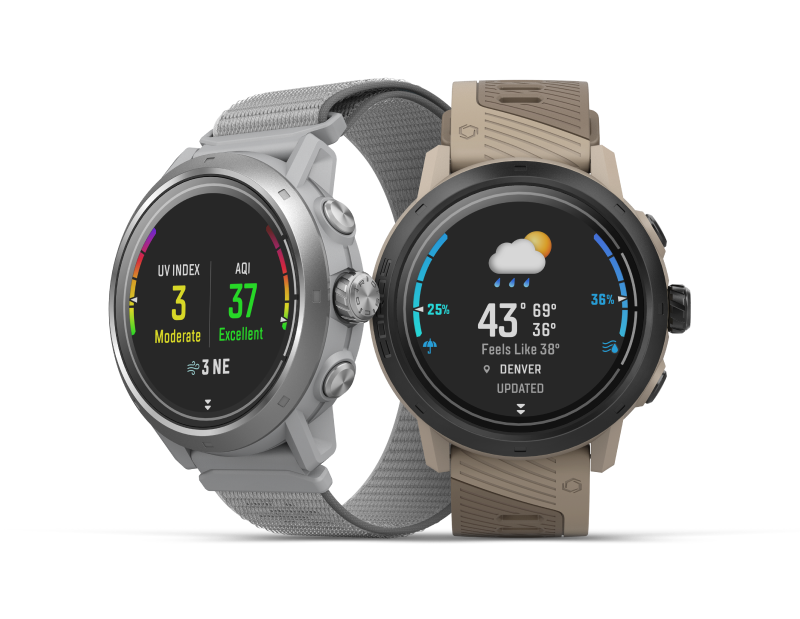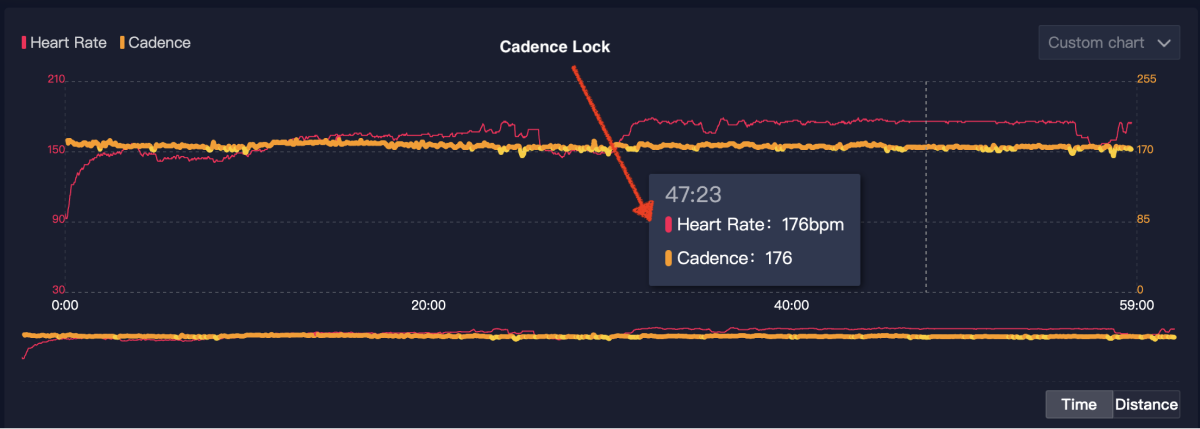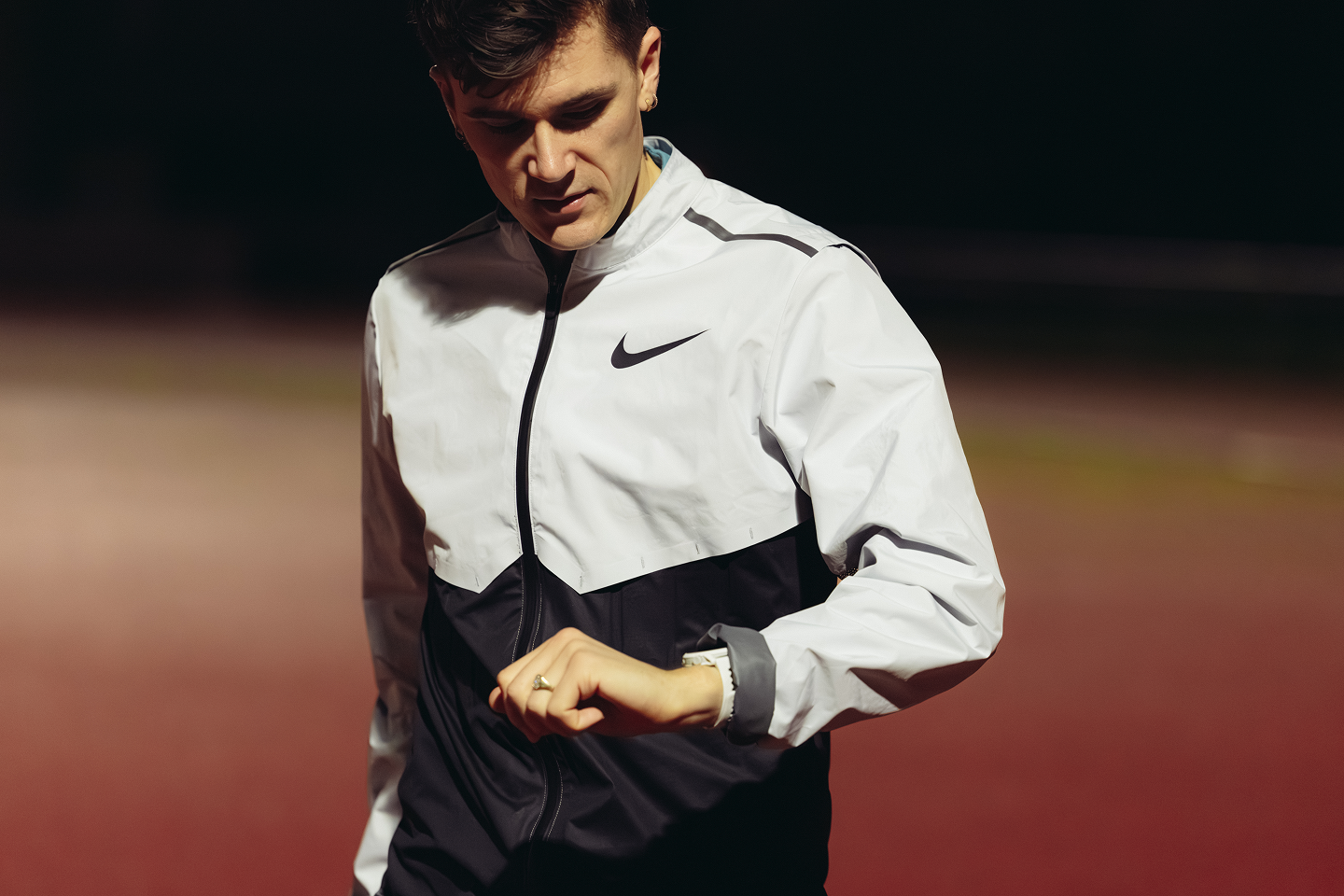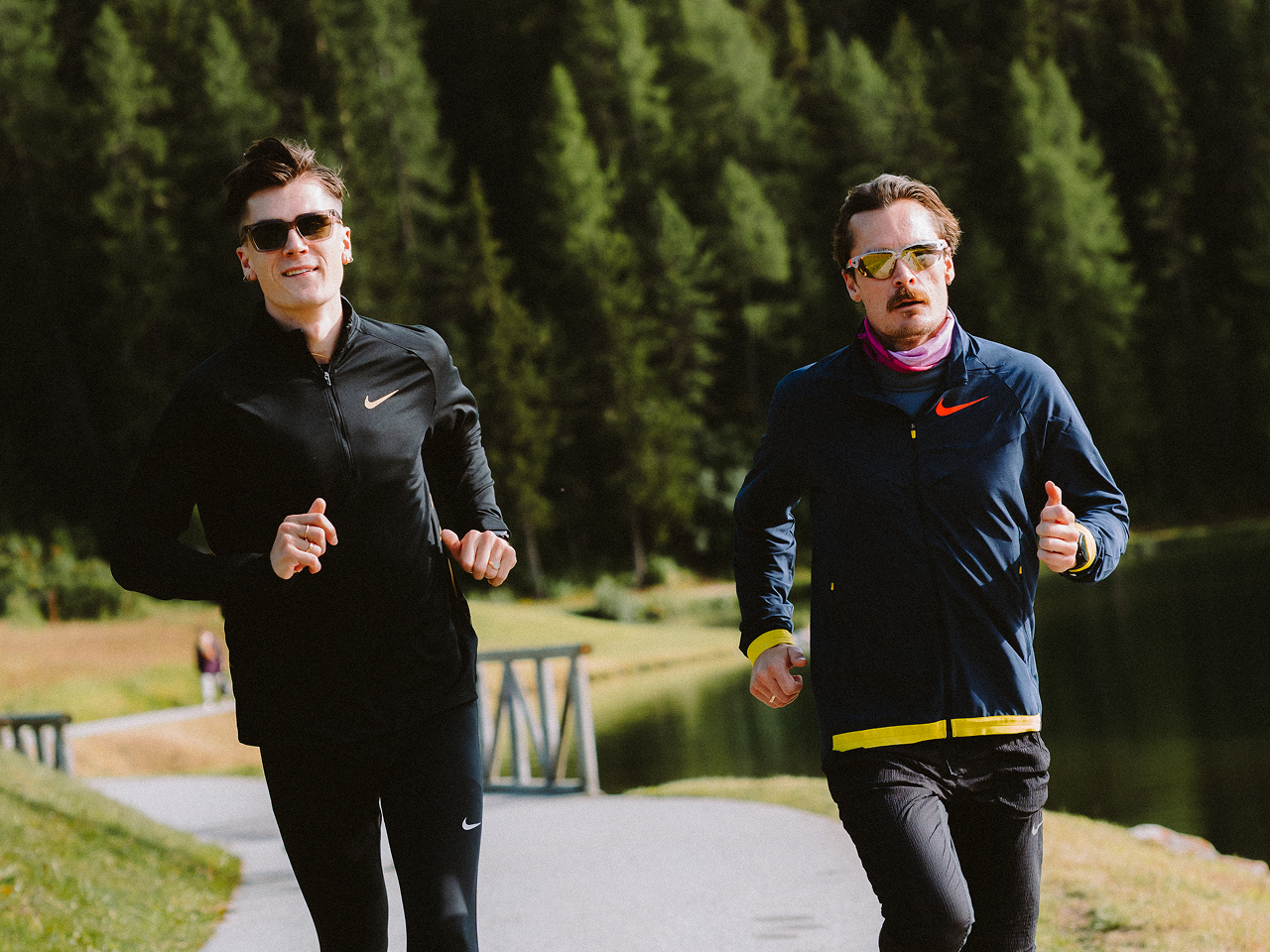Training in the winter does not have to be an endurance test of braving the elements. However, it does pose several challenges that can disrupt your routine. With the right strategies and tools, you can stay consistent and make meaningful progress year-round.
Colder Temperatures
Cold temperatures generally refer to conditions below 10°C (50°F). Performance changes are subtle at first, but become more pronounced as temperatures dip below freezing. Muscles contract more slowly, reaction times decrease, and your body shifts blood away from the skin and extremities to preserve core temperature. For endurance athletes, this means more energy is spent staying warm, which can reduce efficiency and elevate perceived exertion.
With reduced bloodflow, muscles are less flexible and have increased risk of strains or injuries. This makes it even more important to make time for a proper warm-up to reduce the risk of injuries. Spend 5-10 minutes engaging in dynamic stretches to elevate your core temperature and activate your muscles.
Staying hydrated is also important. You may not feel as thirsty as you do in hotter weather, but your body still loses fluids through breathing in dry air and breathing out humid air (in addition to sweat). Make sure to hydrate before, during, and after your run.
If you're determined to continue outdoor training despite winter weather, consider shorter runs or workouts during warmer parts of the day. Take advantage of our weather widget to get a detailed overview of your location's weather directly on your device. This way, you can make well-informed plans and adjust your training accordingly.
Coach's Tip: Smart layering can make a big difference when running in below-freezing temperatures. Include moisture-wicking base layers, insulating mid-layers, and windproof outer layers. Protect exposed skin by wearing gloves, a hat, and thermal socks. For improved grip on icy surfaces, wear appropriate winter running shoes with good traction.

Get the current weather right on your device.
Lack of Motivation
Dealing with a lack of motivation during winter running is a challenge for even the most dedicated athletes. The combination of reduced daylight hours and cold weather can make the idea of heading out for a run seem less appealing. It's important to acknowledge that motivation varies for everyone, and there's no shame in needing an extra push during this time of year. Instead of waiting for motivation to strike, build systems that make it easier to stay consistent.
- Lack of structure can also feed low motivation. Even if you're not training for a race, having a clear training plan helps maintain momentum. Use the COROS Training Hub or one of our off-season or base-building training plans to give your week purpose.
- Be prepared to adjust your training plan as needed. Winter weather can be unpredictable, so having flexibility in your schedule and training options is valuable.
- Whether for safety or structure, treadmill sessions allow you to keep intensity high and conditions controlled. If you cringed at the word treadmill, check out our treadmill article for tips to make those miles feel a little less endless.
- Add variety with cross-training. Activities like indoor cycling, skiing, or strength training can reduce mental fatigue and keep you moving. Use our cross-training guide to build consistency even when you’re not running.
- Plan around daylight. Use the sunrise and sunset widget on your COROS watch to find the best windows for outdoor training. Whether you’re squeezing in miles before work or racing the fading light after, this feature helps you stay safe and consistent through the darker months.

Rowing is a great form of cross training if you cannot run outside
Wrist-Based Heart Rate Monitoring Limitations
In very cold weather, your body will not send as much blood to your hands and feet as on warm days, which may affect the accuracy of wrist-based heart rate data. The weather doesn’t need to be below freezing to impact your optical heart rate accuracy. As long as your hands feel cold, your blood flow is reduced significantly and there is a higher chance for Cadence Lock to occur.
Cadence Lock: When the optical sensors in the watch capture your cadence instead of your heart rate. This syncing can make the watch mistake the motion of your arms or legs for changes in your heart rate, causing the watch to give you incorrect heart rate readings.
Runners looking to receive the most optimal and accurate heart rate readings are encouraged to pair their COROS watch with the COROS Heart Rate Monitor. Wearing the heart rate monitor around your bicep will help to reduce the noise and increase blood volume, limiting the chances of creating cadence lock in your data.

Example of Cadence Lock in Training Hub
Wearing the COROS Heart Rate Monitor against your arm with a shirt sleeve over it will not hinder its performance (and can even help it by reducing external light noise to the sensor), so wearing it under your long sleeves and even a jacket is not a problem! Read through our Science Behind the COROS HRM Blog to learn more about this reliable tool designed to assist you in your training journey.

/filters:quality(90)/fit-in/970x750/coros-web-faq/upload/images/0a859de726f4c63cd00f975d27b02c55.png)




